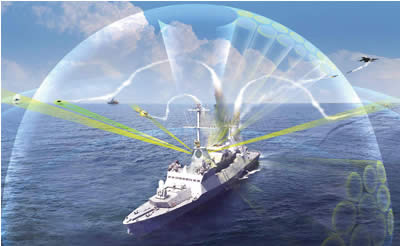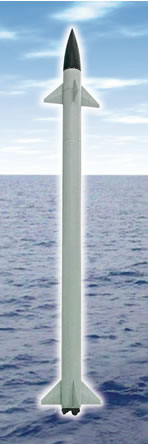
India and Israel agreed to jointly develop a new long range, land-based air defense system to replace the aging Pechora (SA-3 GOA) missiles currently in service with the Indian Air Force. Covering a range of 70 km, the new missile will almost double the range of the 60km vertically launched Barak 8 shipborne missile (also known as Barak NG) currently being developed for the Indian and Israeli Navies under a US$480 million five year program launched in early 2006.
The new missile system will be based on the medium-range naval air defense missile currently under development for the Indian and Israeli Navies. The naval application of the missile will be integrated with the MF-STAR phased array shipborne radar, which Elta claims to be superior to the SPY-1 AEGIS radar. Overall, the MF-STAR / Barak 8 combination is claimed to be superior to the leading US made systems such as AEGIS or Patriot PAC-3 missile systems.

Barak 8 missile utilizes a fully active seeker, the missile is not dependent on the launcher for targeting and guidance, and can perform at much longer ranges, offering effective protection from aerial threats, manned, unmanned as well as guided weapons. Covering both low and high altitudes, the missile is designed for operation on-board ships as well as for terrestrial applications. Barak 8 system is designed to engage multiple targets simultaneously with deadly effectiveness. The missile uses vertical launched missile is designed to offer 360 degrees protection, utilizing an advanced active radar seeker. The missile is equipped with a two-way datalink, supporting mid-course updating and terminal updating and validation. To extend its datalink and C3 coverage over a wide area, the system will integrate surface based radars and communications elements with airborne manned and unmanned elements, maximizing its operability and range over all types of terrain.
MR-SAM is expected to streamline with the original Barak 8 schedule, adding about $300 million to the program development cost. In its decision last week the Indian Government earmarked a total funding of about Rs10,000 crore (about US$2.5 billion) for the medium range surface-to-air missiles (MR-SAM) project. The program will include the deployment of up to nine air defense squadrons. The MR-SAM development will be conducted under the bilateral agreement signed between the two countries, which will guide the scope of collaboration formulating between DRDO and IAI defined in a memorandum of agreement signed in New Delhi, June 2007.
The Indian Air Force plans to re-equip nine air defense squadrons with the new missile, each including two batteries comprising a multi-mission radar system performing target acquisition and guidance, command-and-control element and three container-launchers each mounting eight missiles.
Prime contractor for the program will be the Indian DRDO, with IAI missile and space group acting as leading subcontractor with IAI’s Elta Systems providing the radar and Israel’s RAFAEL producing the interceptor missiles. According to the bilateral agreement, the Indians will be able to locally produce and support the systems.
Barak 8 is expected to be part of a new offensive and defensive system suite under development at IAI’s Missiles and Space division. This new family of weapons will also comprise the latest generation Gabriel 5 anti-ship missile, an integrated combat management system and multi-function EL/M-2248 MF-STAR shipborne phased array radar system.

















